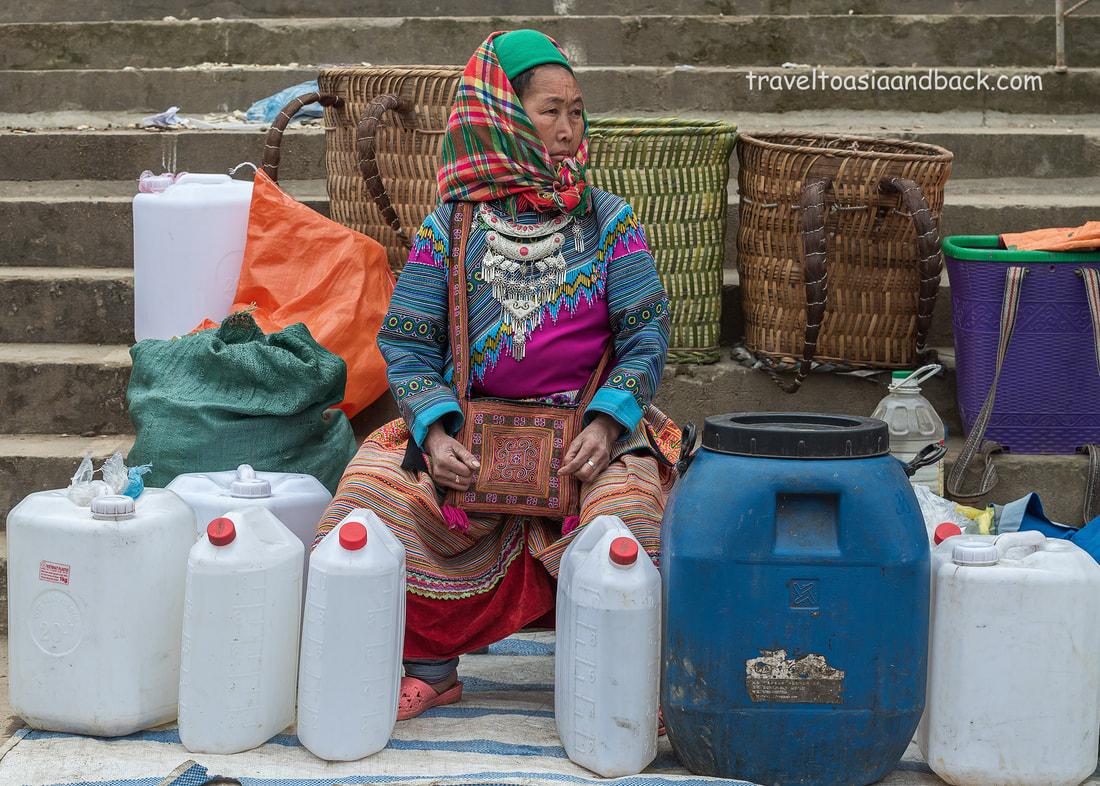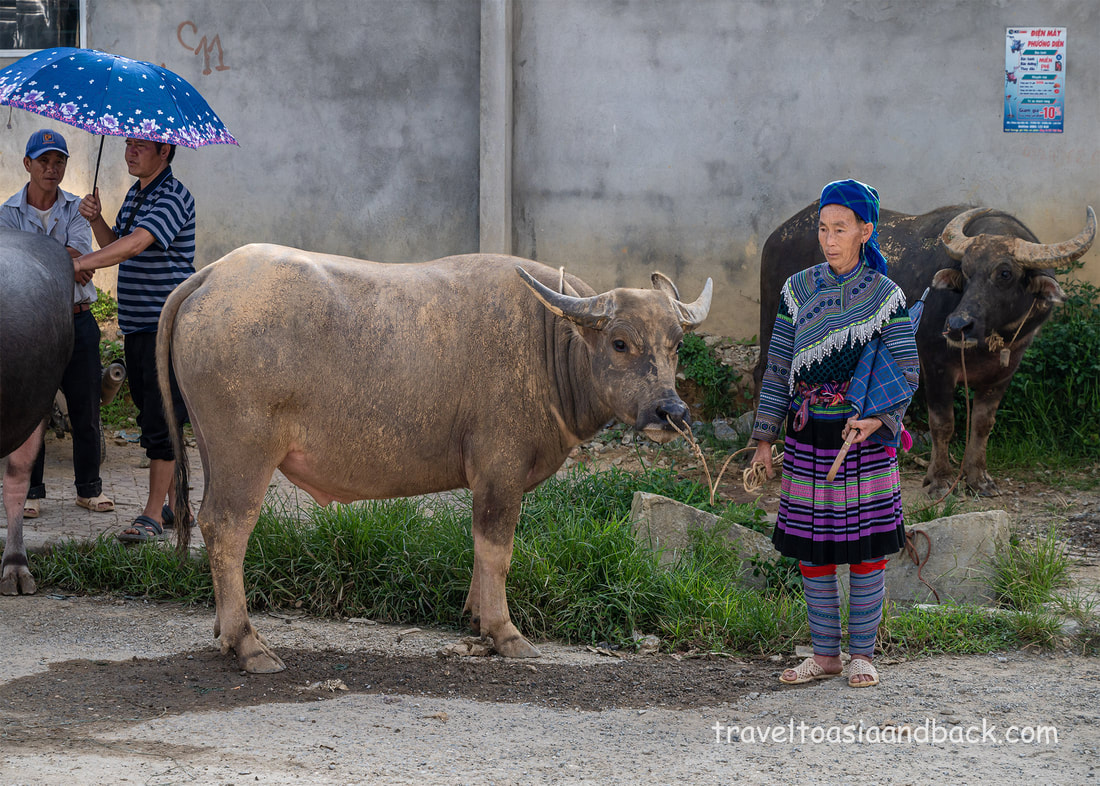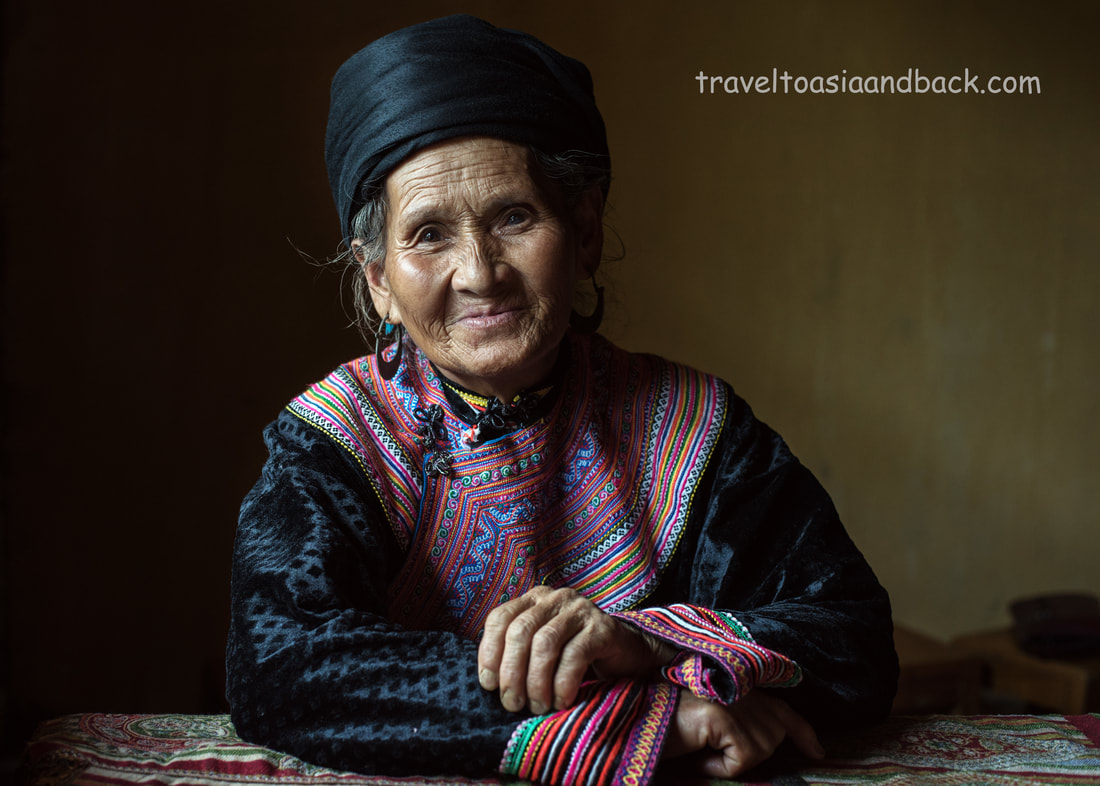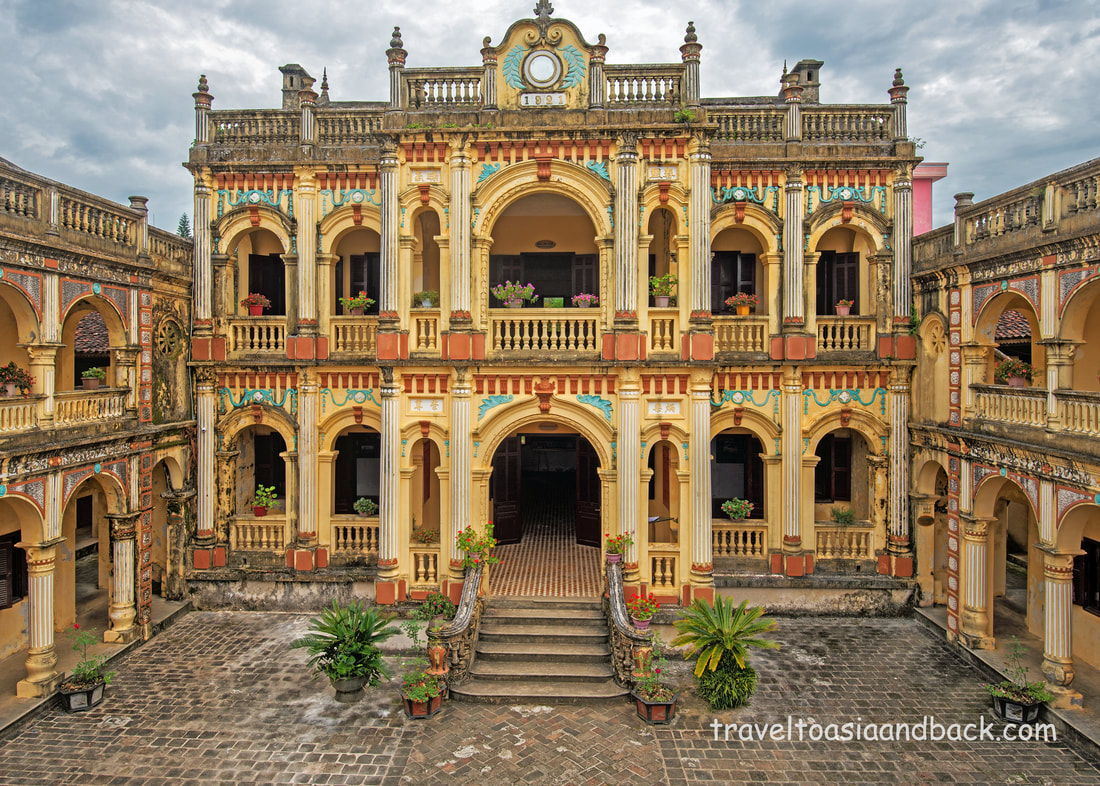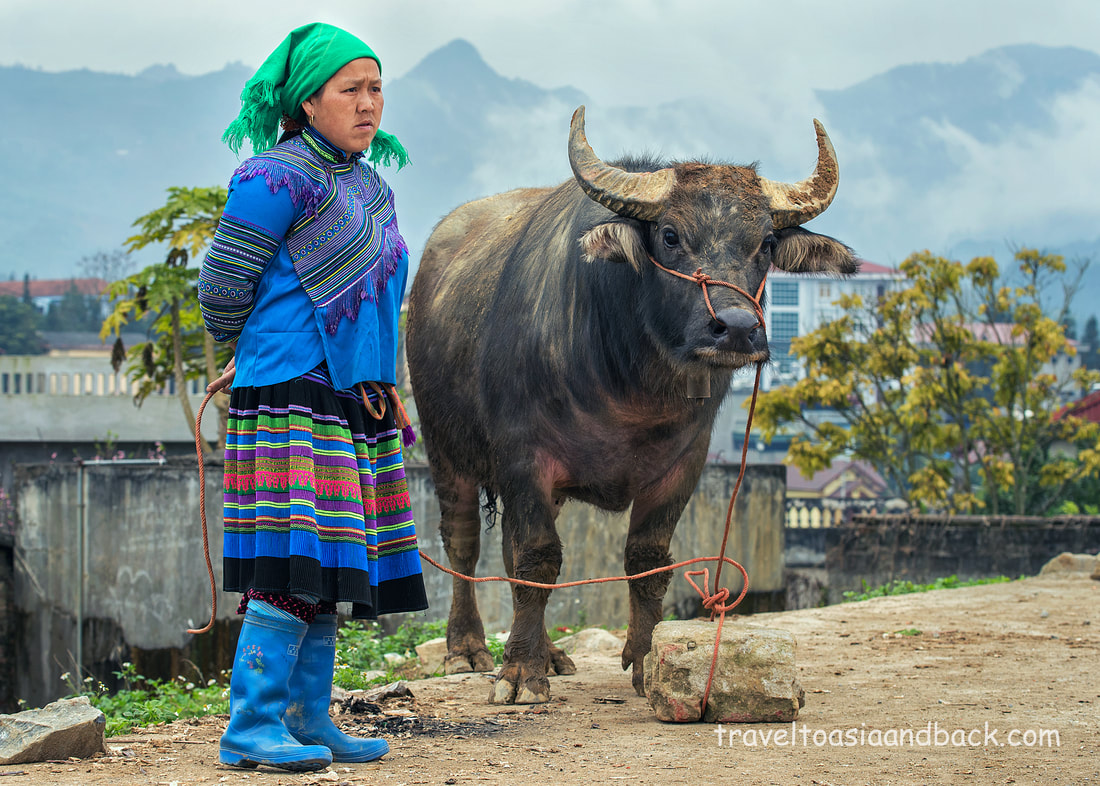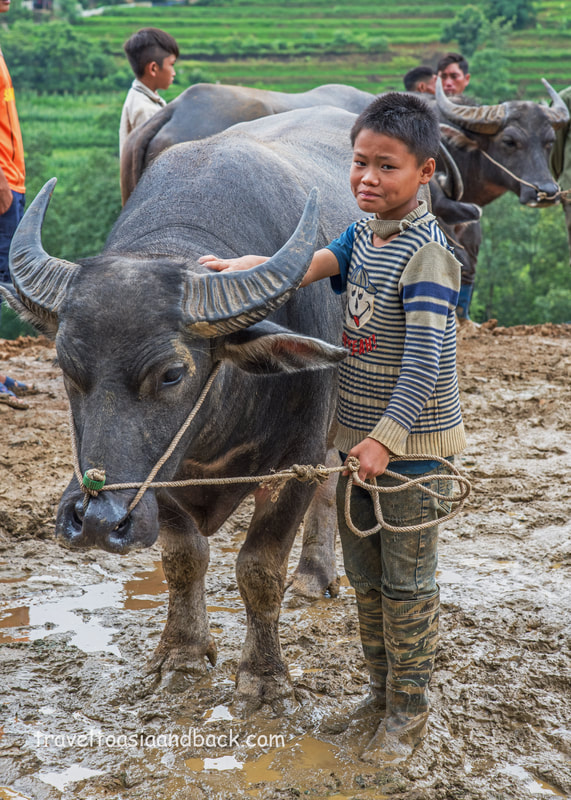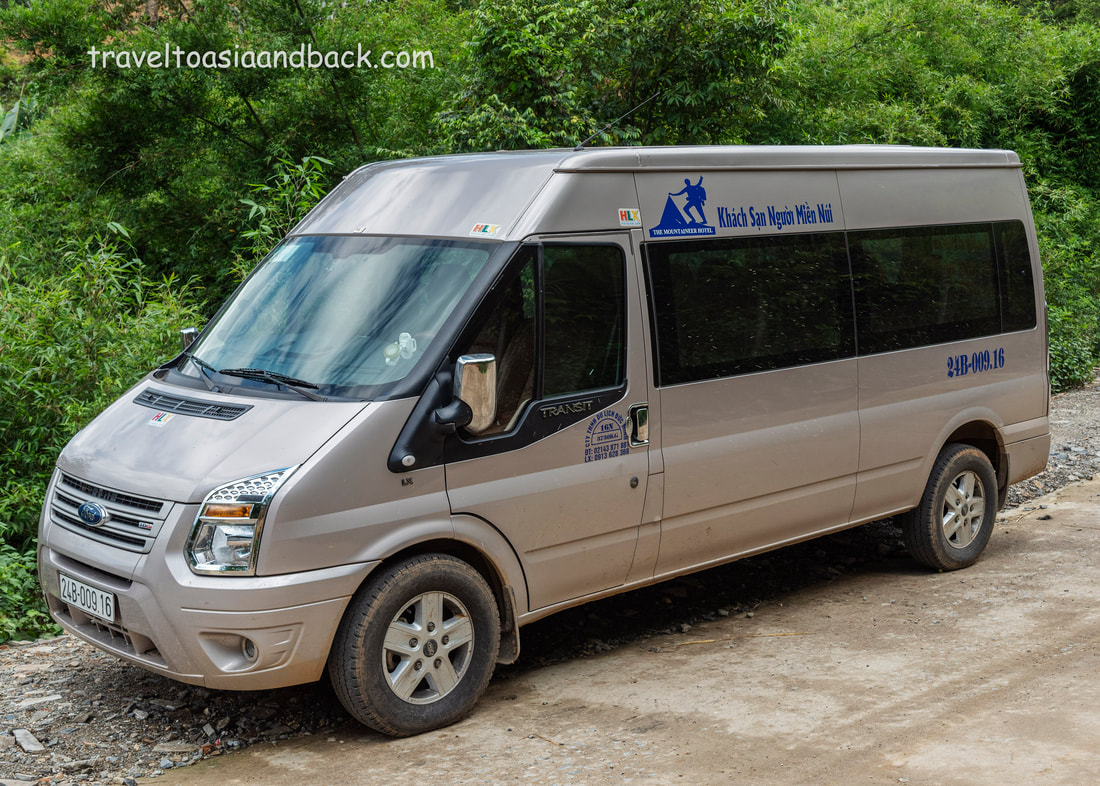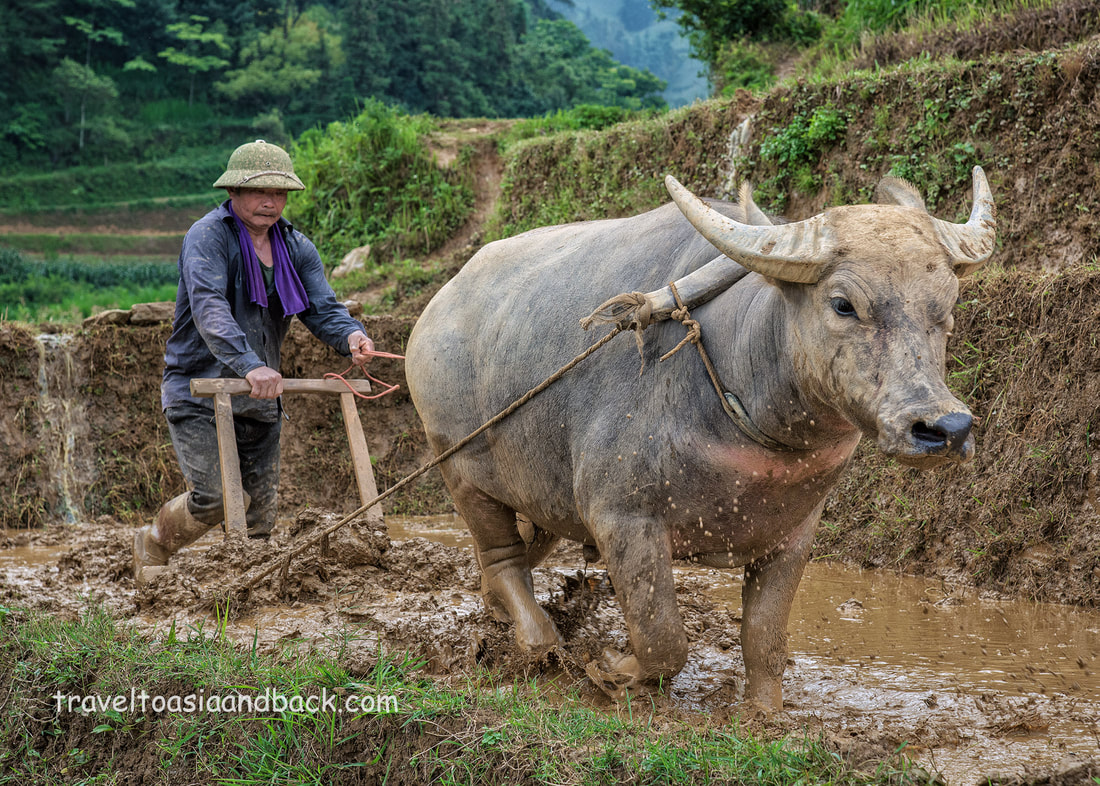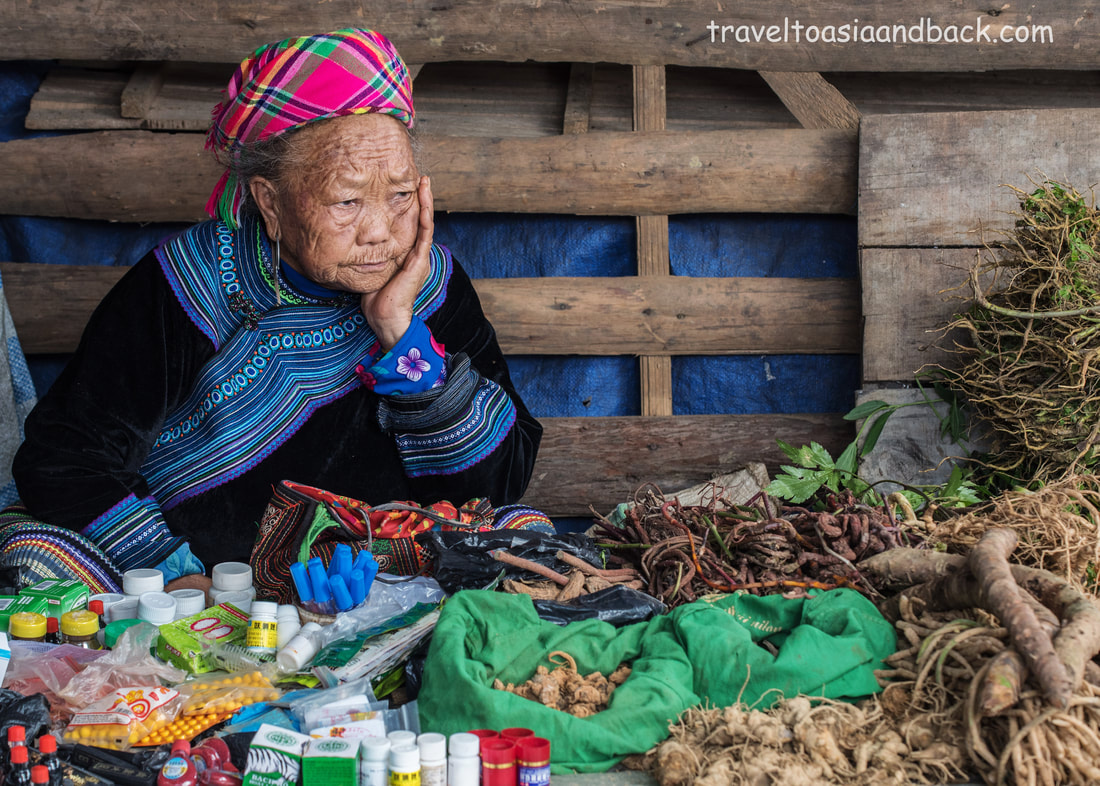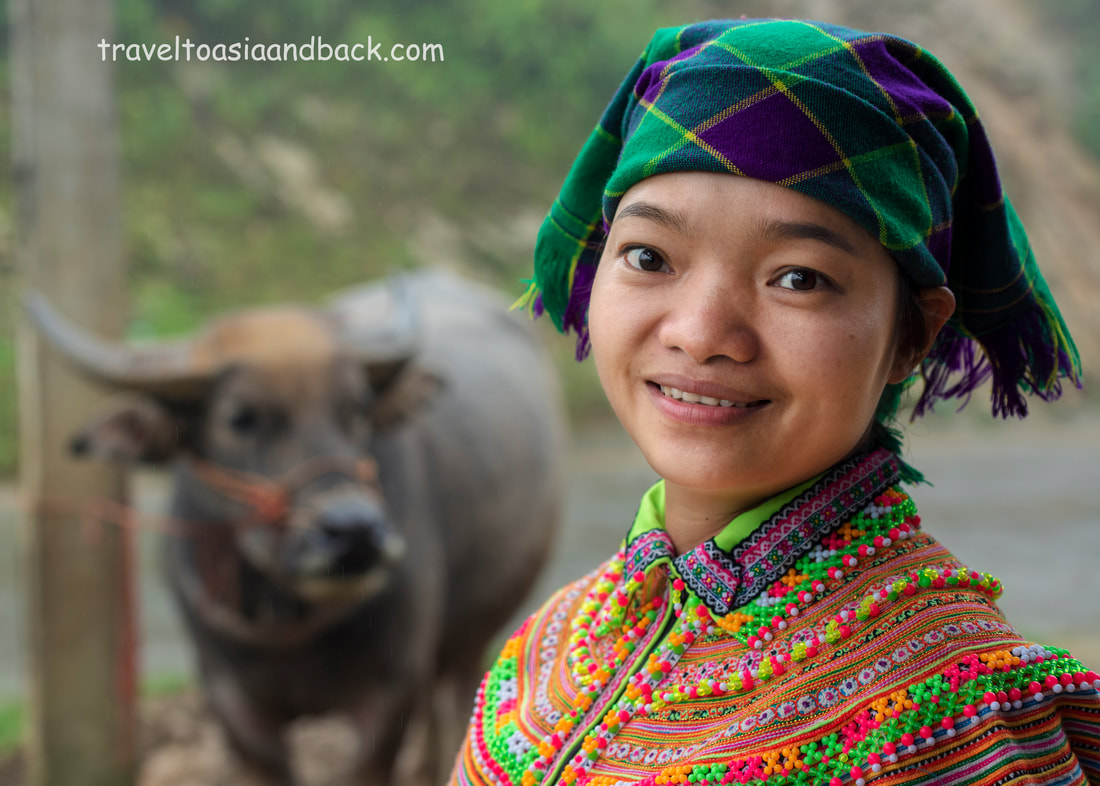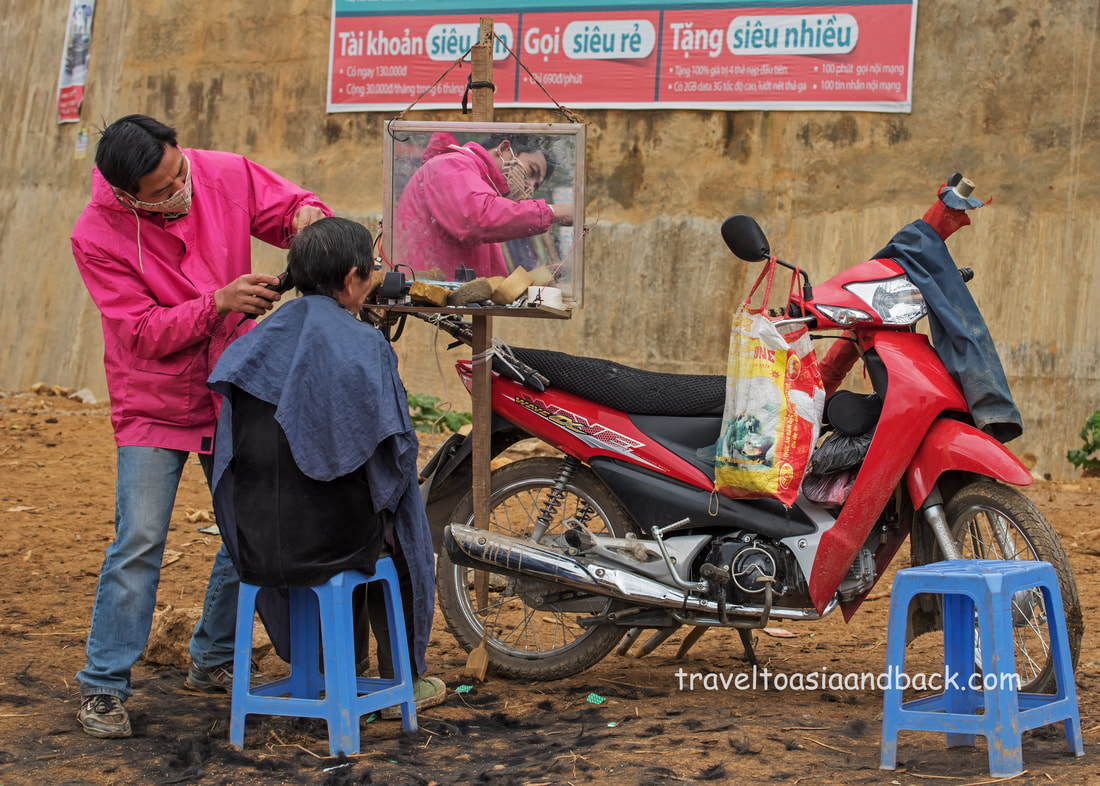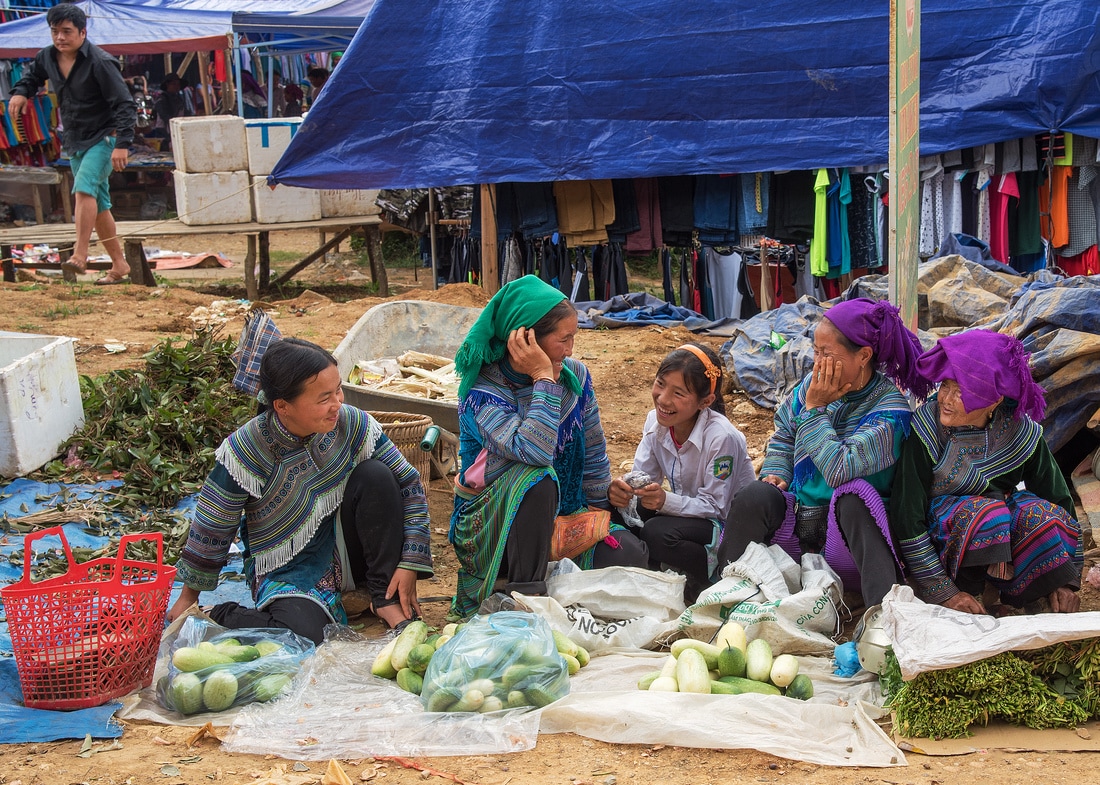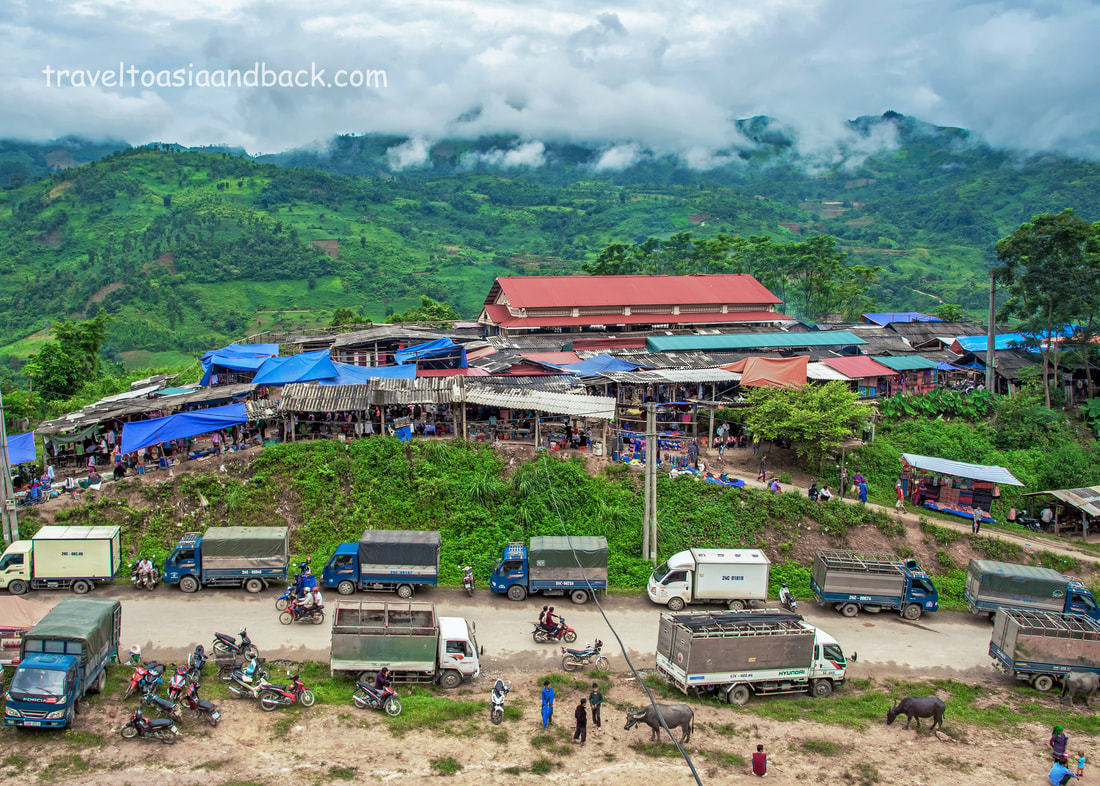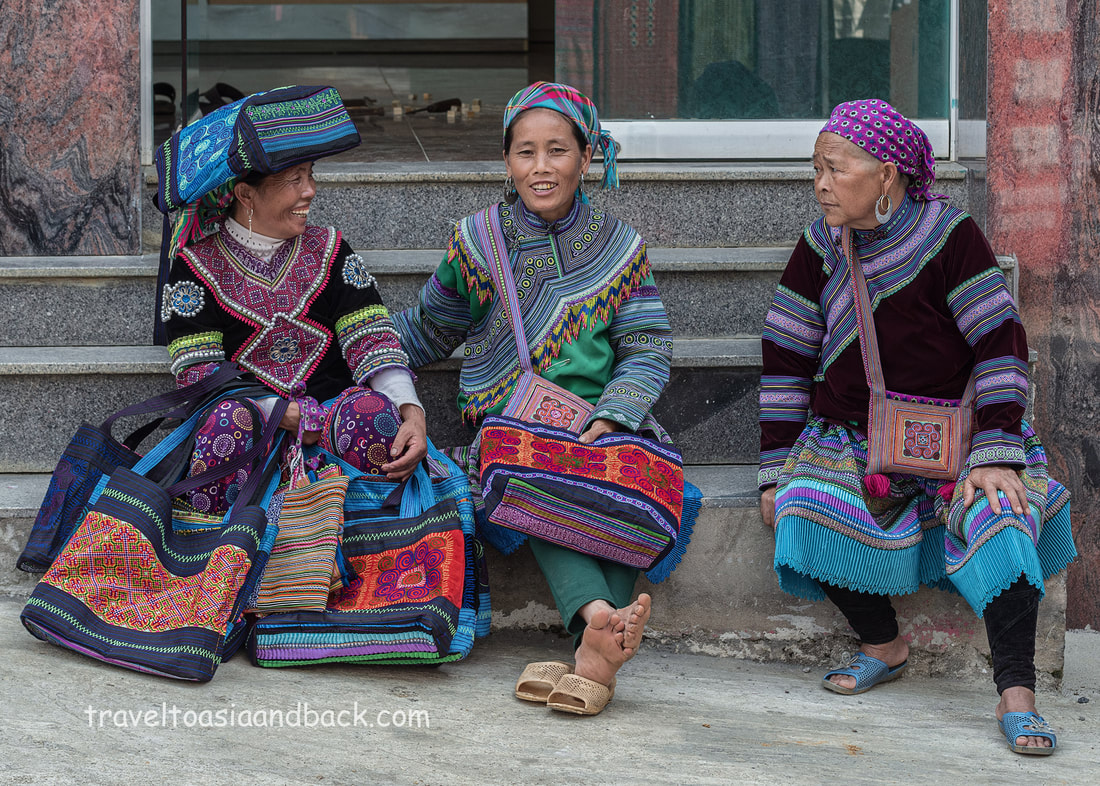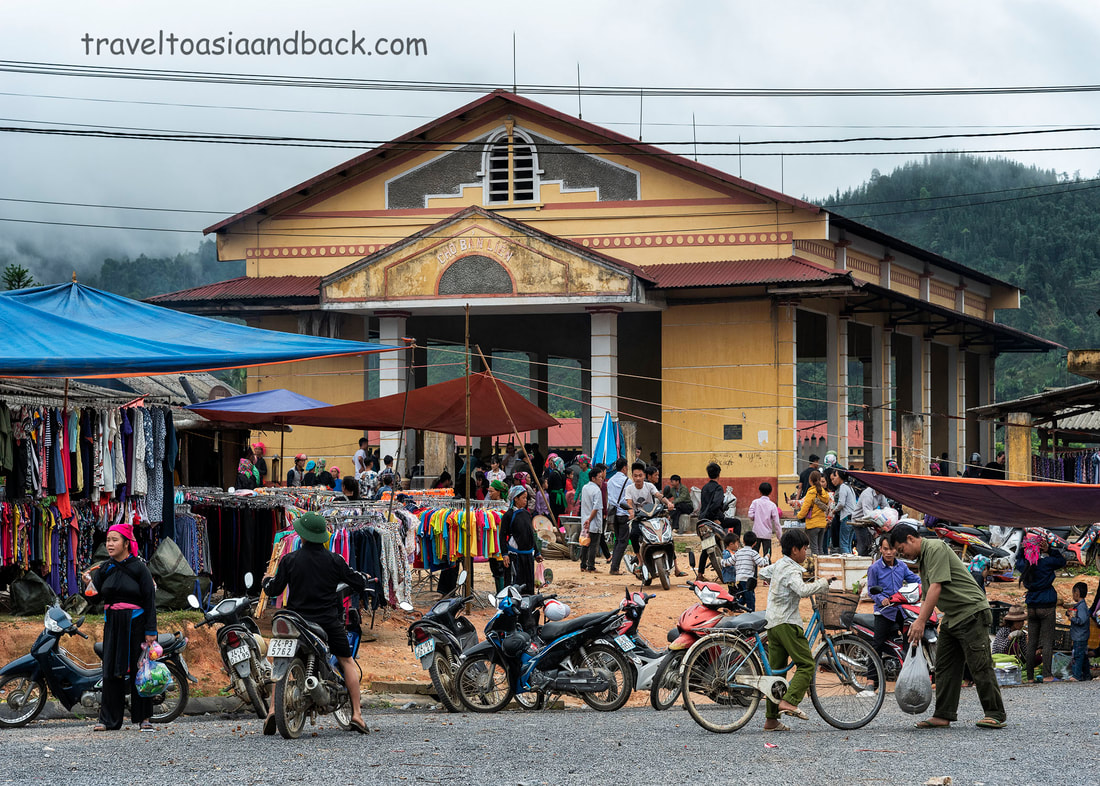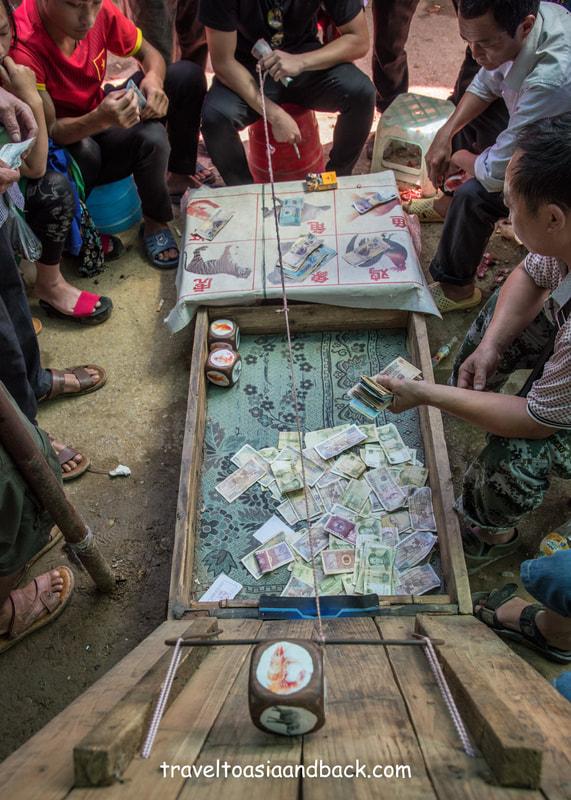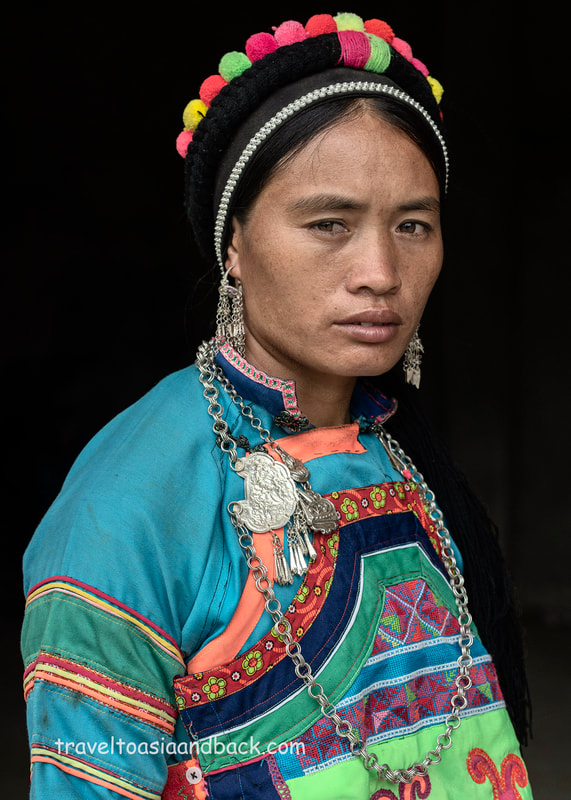Travel Bac Ha
The total population of the Bac Ha District in Lao Cai Province is estimated to be 50,000 people. It is an understatement to call the district capital of the same name anything other than; sleepy. But the quiet little town of Bac Ha comes booming to life for a few hours every Sunday morning when it holds its weekly market. Located 13 miles (22 km) south of the Chinese border, the Sunday market has become something of a tourist attraction attracting both Vietnamese and Western travelers in addition to the several thousand minority ethnic people who attend the market every week.
Fourteen of Vietnam’s 54 ethnic minority groups can be found in the hills, mountains and valleys of Bac Ha District. Making up 44% of the total population, the Hmong, locally know as Flower Hmong, are easily identifiable by their brightly colored and intricately decorated clothing adorned with flower-like patterns. Originally from China, the Hmong migrated to Vietnam several centuries ago. They are mostly subsistence farmers and their ways of life have changed very little since they first settled in the region. On market day many of these ladies put on their most elaborate costumes.
Fourteen of Vietnam’s 54 ethnic minority groups can be found in the hills, mountains and valleys of Bac Ha District. Making up 44% of the total population, the Hmong, locally know as Flower Hmong, are easily identifiable by their brightly colored and intricately decorated clothing adorned with flower-like patterns. Originally from China, the Hmong migrated to Vietnam several centuries ago. They are mostly subsistence farmers and their ways of life have changed very little since they first settled in the region. On market day many of these ladies put on their most elaborate costumes.
Bac Ha Sunday Market
The trading starts early, at 6 a.m., peaks around 10, and by noon most people are headed back to their villages, many on foot, with bamboo baskets full of rice and other basic staples. Amazing arrays of products are sold here including foodstuff such as meat, produce and rice, clothing and household goods. As many of the shoppers here are farmers a wide selection of agricultural equipment from hand and power tools to pumps and machinery is also available. A good portion of the market’s southeastern side, along the lake, is dedicated to trading livestock including pigs, chickens, ducks, goats, and household pets.
Visiting tourists need not feel left out; there are plenty of locally made handicrafts for sale at both fixed stalls and by vendors wandering through the crowd.
When the shopping is finished there are plenty of places to sit and people-watch while enjoying freshly made snacks and glasses of “cafe sua da”, a rich dark iced coffee sweetened with condensed milk.
Visiting tourists need not feel left out; there are plenty of locally made handicrafts for sale at both fixed stalls and by vendors wandering through the crowd.
When the shopping is finished there are plenty of places to sit and people-watch while enjoying freshly made snacks and glasses of “cafe sua da”, a rich dark iced coffee sweetened with condensed milk.
Since the market starts early in the morning and peaks before noon, many travelers opt to arrive in Bac Ha Saturday afternoon and spend at least one night. There are a number of budget hotels in the town, most of which are within a five-minute walk of the market. There are also many inexpensive home-stays in and around town, a few of which can be found in Ban Pho Village. Besides the Sunday market, there is a small Saturday night market and cultural show located in the center of the market. Bac Ha offers trekking opportunities to nearby villages such as Ban Pho.
Bac Ha Friday Buffalo Market - updated April 2024
The big buffalo market in Bac Ha town is now held on Fridays from 14:00-22:00. Located behind the bus station, the market is clearly marked on Google Maps. In many parts of Southeast Asia, buffalo have been replaced by tractors and are kept mostly as a nostalgic status symbol. But not in this part of Vietnam where they are still yoked to handmade wooden plows and used to till the soil of the rice terraces. It is amazing that these enormous yet gentle animals are as important to rural farmers today as they were centuries ago.
Ban Pho Village
In addition to its lively markets, Bac Ha offers visitors the opportunity to trek to numerous ethnic minority villages. One of the most popular is Ban Pho, located just over one mile (2 km) from the center of Bac Ha town. A trek to Ban Pho Village is a great way to spend an afternoon as it is an easy walk which does not require a guide. The area’s friendly inhabitants, mostly Flower Hmong , are hard working farmers who tend the lush fields surrounding the village. Ban Pho can be reached by walking along highway 159, a well marked paved road which will lead visitors through green fields and into the center of the village. Continue on past the village and climb the hills above for an impressive view of the area.
Bac Ha Palace
Besides the market and local villages, Bac Ha has one other tourist attraction. Completed in 1921 the Hoang A Tuong Palace, also known as the Bac Ha or Hmong King Palace is the former home of a wealthy landowner from the Tay ethnic group named Hoang Yen Chao. Supported by the French colonial government the Hoang family owned the majority of the areas fertile land and had trade monopolies on virtually everything. Like much of the colonial era architecture found in Southeast Asia, the palace now a museum, is a fusion of eastern and western design.
The museum features a nice collection of vintage photographs with English language descriptions which tell the story of the King, his family, the local minority people, and the palace. Well worth a visit to learn more about the district and its inhabitants.
The museum features a nice collection of vintage photographs with English language descriptions which tell the story of the King, his family, the local minority people, and the palace. Well worth a visit to learn more about the district and its inhabitants.
Travel to Bac Ha
Reaching Bac Ha from Hanoi is relatively easy but can be time-consuming. By car from Hanoi, the 194-mile (312 km) journey should take less than six hours. That is assuming the driver utilizes the Lao Cai Express and there are no delays on the smaller country roads between the expressway and Bac Ha Town.
Motorcycle enthusiasts often add Bac Ha as a stop between Lao Cai City and Ha Giang Province.
Train travel is possible via Lao Cai Railway Station and a two-hour drive by taxi, car and driver or bus.
The town can be reached by bus from Hanoi, Sa Pa, Ha Giang City, Hai Phong, Thai Nguyen, Thai Binh, and Thinh Long.
Motorcycle enthusiasts often add Bac Ha as a stop between Lao Cai City and Ha Giang Province.
Train travel is possible via Lao Cai Railway Station and a two-hour drive by taxi, car and driver or bus.
The town can be reached by bus from Hanoi, Sa Pa, Ha Giang City, Hai Phong, Thai Nguyen, Thai Binh, and Thinh Long.
Hanoi to Lao Cai City by train
Once upon a time, before the Lao Cai Expressway was completed, the journey was really slow and the train from Hanoi to Lao Cai city was a practical option. With the construction of the modern highway, train travel is now the most time consuming, expensive and complicated way to reach Lao Cai City and on to Bac Ha.
However, for train junkies and those travelers who want to travel at night and save precious daylight hours; everything you need to know can be found here: on the seat61 website.
However, for train junkies and those travelers who want to travel at night and save precious daylight hours; everything you need to know can be found here: on the seat61 website.
Hanoi to Lao Cai City by bus
All the northern Provincial Capitals are well connected to Hanoi by vans, mini-buses and full-sized motor coaches. Both daytime and night buses can be found at Hanoi's My Dinh bus station (Bến xe Mỹ Đình ).
It should be noted that vans can either be quite ordinary or “Limo /VIP / Express” type. Converting ordinary vans in “luxury” vehicles is all the rage in Vietnam and we can expect to see more routes opening up.The Hason Hai van bus company claims to travel from Hanoi to Lao Cai bus station in less than four hours.
The Vexere bus booking website is an excellent resource for finding Vietnamese buses, but I suspect many buses, particularly mini-buses don’t make the list. One can also filter for bus type, price etc.
It should be noted that vans can either be quite ordinary or “Limo /VIP / Express” type. Converting ordinary vans in “luxury” vehicles is all the rage in Vietnam and we can expect to see more routes opening up.The Hason Hai van bus company claims to travel from Hanoi to Lao Cai bus station in less than four hours.
The Vexere bus booking website is an excellent resource for finding Vietnamese buses, but I suspect many buses, particularly mini-buses don’t make the list. One can also filter for bus type, price etc.
Direct Buses from Hanoi to Bac Ha
Hason Haivan operates over night buses between My Dinh bus station (Bến xe Mỹ Đình ) and Bac Ha. The bus is supposed to depart at 20:30 PM.
Trúc Nghiu (phone 086 8770220) operates sleeper style buses, one of which supposed to leave Hanoi’s My Dinh bus station (Bến xe Mỹ Đình ) around 07:30 AM.
Xe Khách Vũ Hán (phone 1900 8118) operates sleeper style buses between My Dinh bus station (Bến xe Mỹ Đình ) and Bac Ha.
Trúc Nghiu (phone 086 8770220) operates sleeper style buses, one of which supposed to leave Hanoi’s My Dinh bus station (Bến xe Mỹ Đình ) around 07:30 AM.
Xe Khách Vũ Hán (phone 1900 8118) operates sleeper style buses between My Dinh bus station (Bến xe Mỹ Đình ) and Bac Ha.
Direct Buses from Hai Phong to Bac Ha Via Hanoi
Kết Đoàn (Bac Ha phone 0926 051222) operates sleeper style buses on this route. These buses are supposed to pick up and drop off passengers on the outskirts of Hanoi.
Direct Buses from Thịnh Long to Bac Ha Via Hanoi
Ninh Thủy (phone 0913 900 157) operates sleeper style buses on this route. These buses are supposed to pick up and drop off passengers on the outskirts of Hanoi.
Lao Cai City to Bac Ha by Van, Mini-bus or Full-Sized Bus
Numerous (ordinary) vans, mini-buses, and a couple of big buses regularly make the two-hour trip between Lao Cai City and Bac Ha Town. Many of the drivers start from the old bus station, which is roughly 350 meters from the Railway Station. The route travels along the Red River up to the junction of Highway AH 14 and on to Bac Ha.
It is extremely easy to find these buses anywhere along this route and they are generally clearly marked. However, between the hours of 11:00 AM and 1:00 PM, many drivers take a long lunch break and buses can be scarce.
Currently, the fair price of these buses is 70,000 – 90,000 VND
It is extremely easy to find these buses anywhere along this route and they are generally clearly marked. However, between the hours of 11:00 AM and 1:00 PM, many drivers take a long lunch break and buses can be scarce.
Currently, the fair price of these buses is 70,000 – 90,000 VND
Bac Ha to Sapa by Bus
Traveling between Bac Ha and Sapa via Lao Cai City is really easy and travelers have a few different options. Numerous privately-run vans, mini-buses and buses regularly make the two-hour trip from Bac Ha to the railway station in Lao Cai City. The asking price is 60,000-70,000 VND.
The number one and two red and yellow public buses leave from the bus stop at the Lao Cai Railway Station. The journey ends at the little stone church in Sapa Town. The current price is 40,000 VND.
Currently there is one van per day that runs directly between Sapa and Bac Ha. The fair price should be no more than 150,000 VND, but if you book a seat through your accommodation, they will often mark up the price of the tickets. The van departs Bac Ha at around 07:30 AM and 01:45 PM from Sapa. The phone number is 0962 611 044.
There is one mini-bus running a route that includes Si Ma Cai - Bac Ha - Lao Cai- Sapa. It departs Si Ma Cai at 06:00 AM and Sa Pa at 01:00 PM. The phone number is 0912 876 658 / 0914 778 862.
The journey takes a solid three hours.
The number one and two red and yellow public buses leave from the bus stop at the Lao Cai Railway Station. The journey ends at the little stone church in Sapa Town. The current price is 40,000 VND.
Currently there is one van per day that runs directly between Sapa and Bac Ha. The fair price should be no more than 150,000 VND, but if you book a seat through your accommodation, they will often mark up the price of the tickets. The van departs Bac Ha at around 07:30 AM and 01:45 PM from Sapa. The phone number is 0962 611 044.
There is one mini-bus running a route that includes Si Ma Cai - Bac Ha - Lao Cai- Sapa. It departs Si Ma Cai at 06:00 AM and Sa Pa at 01:00 PM. The phone number is 0912 876 658 / 0914 778 862.
The journey takes a solid three hours.
Lao Cai to Bac Ha and on to Si Ma Cai
There are a handful of vans, mini-buses and a large bus or two doing this route. Any of these buses are perfectly fine for travelers headed to either Bac Ha or Can Cau Market. Lao Cai to Bac Ha should be no more than 90,000 VND. Bac Ha to Can Cau is 50,000 VND.
Can Cau Saturday Market
Located 12 highway miles (19 km) north of Bac Ha, the small village of Can Cau hosts a smaller version of the Bac Ha market every Saturday morning. Overlooking a beautiful valley blanketed in rice terraces and cornfields, the market is spread out over a fairly large area. Situated along provincial road DT- 153, it feels less crowded, and until recently had fewer tourists than the market in Bac Ha. Since many of the vendors are selling their wares on the highway itself, it is easier to move around and take photographs.
Much like Bac Ha, Can Cau market attracts the colorfully dressed Flower Hmong people who both buy and sell fresh produce, livestock, farming equipment and all sorts of clothing and household goods. In the very back of the market is a long-curved path where vendors sell handicrafts, trinkets, and souvenirs to a growing number of tourists.
The trip from Bac Ha to Can Cau takes about forty minutes, so we recommend getting an early start. The market can be reached by bus or motorcycle taxi; a one-way moto ride costs 100,000 – 150,000 VND. Another option is to hire a motorcycle taxi and after seeing the market make a tour of the surrounding area. Drivers can be arranged through hotels to do a six to eight-hour sight-seeing tour for around $30 USD.
To reach Can Cau by bus, take any of the local ones marked "Lào Cai - Bắc Hà - Si Ma Cai". These buses pass directly in front of the market which happens to be on the main road between Bac Ha and Si Ma Cai. Since buses make frequent stops, the journey takes at least one hour. The cost, each way, is 50,000 VND.
Much like Bac Ha, Can Cau market attracts the colorfully dressed Flower Hmong people who both buy and sell fresh produce, livestock, farming equipment and all sorts of clothing and household goods. In the very back of the market is a long-curved path where vendors sell handicrafts, trinkets, and souvenirs to a growing number of tourists.
The trip from Bac Ha to Can Cau takes about forty minutes, so we recommend getting an early start. The market can be reached by bus or motorcycle taxi; a one-way moto ride costs 100,000 – 150,000 VND. Another option is to hire a motorcycle taxi and after seeing the market make a tour of the surrounding area. Drivers can be arranged through hotels to do a six to eight-hour sight-seeing tour for around $30 USD.
To reach Can Cau by bus, take any of the local ones marked "Lào Cai - Bắc Hà - Si Ma Cai". These buses pass directly in front of the market which happens to be on the main road between Bac Ha and Si Ma Cai. Since buses make frequent stops, the journey takes at least one hour. The cost, each way, is 50,000 VND.
Coc Ly Monday Buffalo Market - updated June 2024
The buffalo market in Coc Ly is now held on Monday mornings at Coc Ly market. See below.
Coc Ly Tuesday Market
Coc Ly is a tiny village located approximately 18 kilometers west of Bac Ha town. Inhabited primarily by Flower Hmong people, the village hosts a market every Tuesday morning. Although the market is roughly half the size of either Bac Ha or Can Cau markets, it is very popular with tourists who visit as part of organized tour groups from Bac Ha, Lao Cai or Sapa. One of the main reasons for visiting this market is the stunning scenery of the surrounding area. The 40-minute drive from Bac Ha, up a narrow, winding country road, is simply spectacular. Unfortunately, there are no buses or mini-buses running to Coc Ly. Transportation options are limited to hiring a car, renting a motorbike motorcycle taxi (xe ôm in Vietnamese) from Bac Ha town.
Sin Cheng Wednesday Market
Located 22 highway miles (35 km) northwest of Bac Ha the market in Sin Cheng is held every Wednesday morning. Similar to the market in Coc Ly, it is small but very lively. Like all of the markets in Bac Ha, the local Flower Hmong women and girls dress in their best costumes. There is a good-sized area where water buffalo are bought and sold in addition to the usual chickens, ducks, and pigs. The 60-minute drive from Bac Ha town offers spectacular views of the district’s highest peaks. There is no public transportation to Sin Cheng; the closest place to find a bus is 5 miles (8 km) away in Si Ma Cai. Most tourists visit the market as part of an organized tour. Transportation options are limited to hiring a car, renting a motorbike or by motorcycle taxi (xe ôm in Vietnamese) from Bac Ha town.
Ban Lien Thursday Market
Ban Lien (Bản Liền) is a tiny village located approximately 15 miles (25 km) east of Bac Ha town. Inhabited primarily by Black Tay people, the village hosts a market every Thursday morning. The market itself is very small and is not particularly interesting, but the local Tay people are extremely friendly and welcoming. This area sees very few tourists and like the rest of the district, is very beautiful. The 50-minute drive from Bac Ha, up a narrow, winding country road, is simply spectacular. Unfortunately, there are no buses or mini-buses running to Ban Lien. Transportation options are limited to hiring a car, renting a motorbike or by motorcycle taxi (xe ôm in Vietnamese) from Bac Ha town.
San Chai Friday Market
Due to the COVID pandemic and the closing of the borders between China and Vietnam: this market is not currently being held. - November 2023
Straddling the borders of Vietnam and China, the Friday morning market held in San Chai is actually in the Xin Man district of Ha Giang Province. However, the few western tourists who visit this isolated area do so from Bac Ha. The 21 miles (34 km) drive town offers visitors spectacular views of the districts highest peaks and deepest valleys.
The market itself is rather small when compared to the more well-known ones in Can Cau or Bac Ha Town, but it is truly unique for a number of reasons. Its location on the banks of the Song Chay River, a natural border between Vietnam and China, provide more postcard views of awe-inspiring scenery. The final leg in the journey requires a brief boat trip across a Vietnamese tributary of the Song Chay. The bustling market is situated on an unguarded stretch of border with vendors from both nations lining the roadsides. They sell their wares to the local Flower Hmong population who simply wander back and forth between the two countries.
Most markets in northern Vietnam have a certain kind of country fair atmosphere. Local minority ladies dress in their very best costumes. Men gather to drink and chat, children eat ice cream while shopping for clothing and toys. A favorite pastime at the San Chai market is gambling, which is generally illegal in Vietnam.
Here you will see games of chance popular in neighboring Yunnan Province. A particularly popular game involves betting on the outcome of large dice decorated with elephants, roosters, tigers, fish etc. The game can be played by anyone, simply place Dong or Yen notes on your animal of choice and watch the dice roll.
Unfortunately, there are no buses or mini-buses running to San Chai. Transportation options are limited to hiring a car, renting a motorbike or taking a motorcycle taxi (xe ôm in Vietnamese) from Bac Ha town.
The market itself is rather small when compared to the more well-known ones in Can Cau or Bac Ha Town, but it is truly unique for a number of reasons. Its location on the banks of the Song Chay River, a natural border between Vietnam and China, provide more postcard views of awe-inspiring scenery. The final leg in the journey requires a brief boat trip across a Vietnamese tributary of the Song Chay. The bustling market is situated on an unguarded stretch of border with vendors from both nations lining the roadsides. They sell their wares to the local Flower Hmong population who simply wander back and forth between the two countries.
Most markets in northern Vietnam have a certain kind of country fair atmosphere. Local minority ladies dress in their very best costumes. Men gather to drink and chat, children eat ice cream while shopping for clothing and toys. A favorite pastime at the San Chai market is gambling, which is generally illegal in Vietnam.
Here you will see games of chance popular in neighboring Yunnan Province. A particularly popular game involves betting on the outcome of large dice decorated with elephants, roosters, tigers, fish etc. The game can be played by anyone, simply place Dong or Yen notes on your animal of choice and watch the dice roll.
Unfortunately, there are no buses or mini-buses running to San Chai. Transportation options are limited to hiring a car, renting a motorbike or taking a motorcycle taxi (xe ôm in Vietnamese) from Bac Ha town.
Lung Phinh Friday Market
Situated at the junction of road DT153, and an unnamed country road leading to Cốc Pài, Xín Mần, District, Ha Giang Province, six miles (10km) north of Bac Ha town, sits the tiny village of Lung Phinh (Lùng Phình). Lung Phinh holds a market every Friday morning. Out classed by the famous Bac Ha market, this area is mostly overlooked by travelers.
The country side, dotted with lush farmer’s fields and traditional wood and clay homes, is home to forty families of Phu La (Chù Lá Phù Lá) people. The Phu La are a part of the same Tibeto-Burman language speaking group as the Lô Lô and Hà Nhì and are distant relatives of the Akha.
The country side, dotted with lush farmer’s fields and traditional wood and clay homes, is home to forty families of Phu La (Chù Lá Phù Lá) people. The Phu La are a part of the same Tibeto-Burman language speaking group as the Lô Lô and Hà Nhì and are distant relatives of the Akha.
